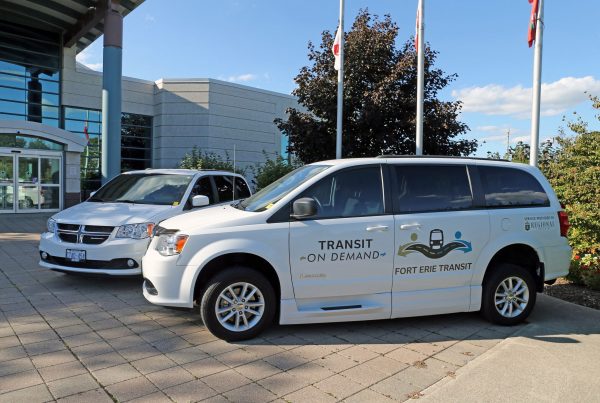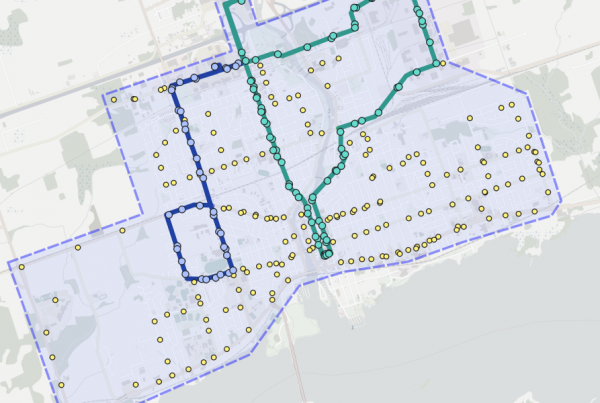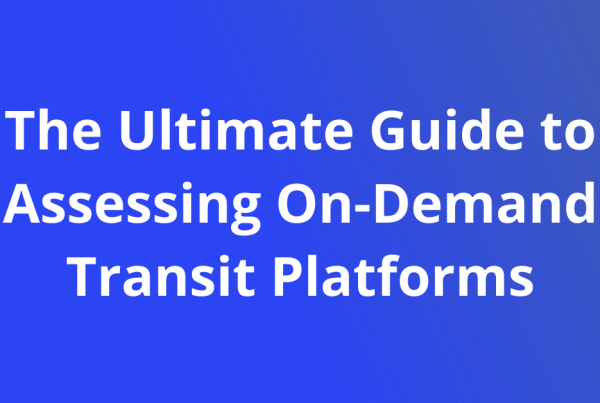Let’s consider a laudable goal, public transit systems offering integrated mobility that is accessible enough to make people want to ride buses again, and flexible enough to get people to ditch their habits of using single occupancy vehicles. This can be done in the “short term” of less than five years, at a large scale, across a metropolitan area. All it will take are massive operational changes to fleet management and a paradigmatic shift in how transportation is planned. But hear me out transit directors of the world, you can be brave these days.
Here is a simple challenge: not all public transit assets need to be fixed to rigid schedules and routes. Instead, we can leverage the decades of experience and technology that logistics and field service companies have developed to help solve the challenges of people transportation. The result is flexible vehicles operating at a novel level of efficiency. How do we get there? Consider the assumptions first.
Trains are fixed, Bus Rapid Transit (BRT) is fixed, bus routes on high population roadways should be fixed. But most transit vehicles are not on rails, they can go almost anywhere as long as they can turn around. Transit operators will bristle at the thought of sending buses up twisting roads to pick up a passenger, but they will also run empty buses, at low frequency, along low demand routes, day in and day out at the expense of the rest of their system. A lot of time and effort goes into devising routes for transit but no amount of engineering can escape space and time.

Eric Fischer, A day of Los Angeles Metro, visualization of LA transit speeds
This is the constraint that limits public transit’s utility: the availability of vehicles based on budgets and physical resources of an agency, in relation to geography and demand. No transit operator will say that they build “bad” routes. There is really no such thing. Transit planners have a mandate for reliable grids of service over a set area according to peer group standards. When you factor in the realities of the service area and limitations of fixed routes, some areas will have infrequent service, some areas will not be served at all. While cost recovery ratios of most transit is in the 20% – 50% range. Transit is a public good, so it will be excused for inefficiency, but try explaining that to councilors and constituents.
Space and time do have impacts on the ridership, who will vote with their feet, by walking all the way to their cars. Unless they are captives of poverty or in dense urban cores, people will drive. Especially to get to employment: 75 percent of workers commute via single occupancy vehicle. Even considering the economic and environmental benefits of using transit, we North Americans still care more about our time, not the times dictated by transit schedules.
The clash happens when transit resources are stretched over large areas and headways reach the 30-60+ minute mark. This illustrates our issue with many transit planning wonks who claim that on-demand, flexible transit is never going to work. What they don’t realize is that on-demand has to work. Unless buses start growing on trees, there will never be enough transit vehicles to allow high frequency fixed routes everywhere. The only way to really make a change strong enough to make people give up their cars is to overcome the challenge of time.
What is the solution? All possible vehicles in a system should be made flexible, some key routes, if they are efficient should be kept fixed. All other assets, especially smaller more nimble and cheaper to run vehicles should be made available for all users. Transit already has access to paratransit vehicles, they could compliment their fleet without purchasing anything. ADA eligible riders will hold higher priority based on their needs, but co-mingling of general population on those assets has to happen as well. These assets will have routes built in real time based on people giving their travel times, locations and destinations to the system. Vehicles are dispatched which solve first and last mile to get people on fixed routes to complete entire journeys.
Offering new levels of service like this has been attempted across the world. Bridj in Kansas City and Uber all over the world. Vehicle OEMs are also getting into the fray, Ford bought a private transit company, Chariot for tens of millions. There are pilots programs demonstrating this from Finland to Oregon. What all these, mostly failed, attempts are showing is there is a demand for this level of service, but it has not been done at scale or with the right integration with public transit. This requires technology and operational changes. It is hard to coordinate an entire system to optimize routes and schedules at a “global” level. But the opportunities are massive, for example a globally optimized fleet of vans, working with existing fixed transit could replace millions of cars in whatever area it is deployed in, as long as it is done at the right scale. All you need is the right system.
Ask yourself, do you think our metropolitan areas need to replace single occupancy vehicles? Do you think transit has the largest role in that endeavour, not private transportation network companies? If so, our transit leadership should consider joining the mobility revolution, and the first step is admitting change is possible.




